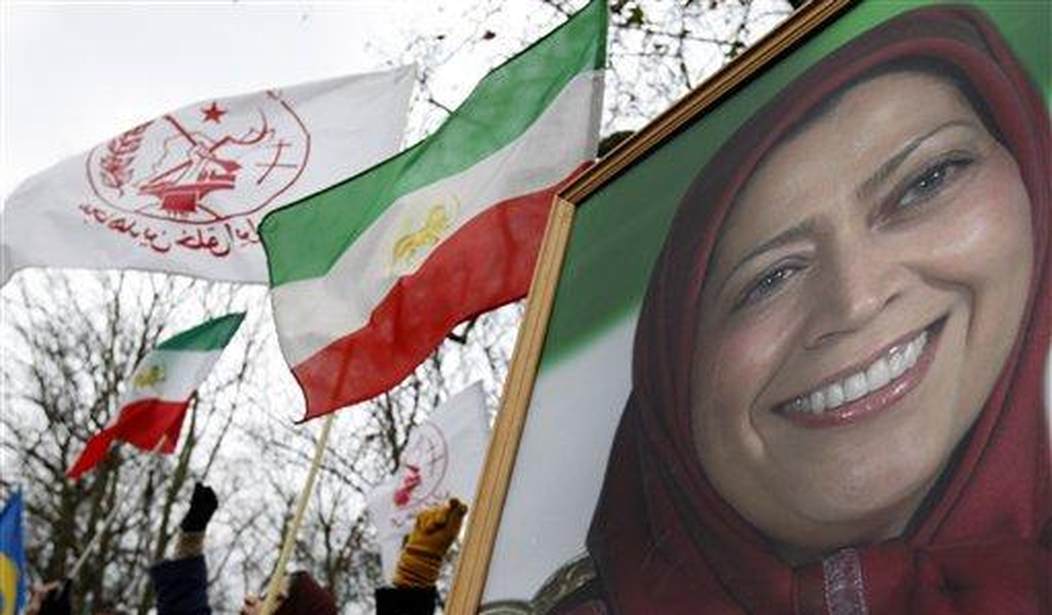Momentum is steadily growing toward transformative change in the Islamic Republic of Iran, and with it comes greater awareness of the fact that women will be among the greatest agents of that change.
This message was also delivered on the occasion of International Women’s Day, March 8, by the Iranian opposition leader Maryam Rajavi, when she told female dignitaries from 28 countries that “the defeat of the Velayat-e Faqih regime [absolute rule of the clerics] will be accomplished by pioneering women.” This is a view that she has long promoted, but one that has become especially relevant in the face of developments over the past two years.
In September 2022, the Iranian regime faced a popular uprising that was widely regarded as the greatest challenge to its hold on power since the regime’s inception in 1979. To a great extent, the strength of that challenge was a direct reflection of the strength of Iran’s female activist community. It began after “morality police” in Tehran killed a 22-year-old woman whom they deemed to be wearing her mandatory headscarf too loosely.
The uprising soon adopted a much broader political message, with participants demanding the removal of the entire theocratic system behind Mahsa Amini’s death and all of the related instances of women being brutalized and humiliated in the interest of social control.
This anti-government message conveyed via slogans like, “death to the dictator, whether Shah or Supreme Leader,” spread across all 31 Iranian provinces with the help of a network of “Resistance Units” affiliated with the Iranian oppositional group, the People’s Mojahedin Organization of Iran. The simultaneous demands for regime change and women’s rights are consistent with a point that Mrs. Rajavi emphasized as part of her speech in Paris. “The experience of the Iranian Resistance,” she said, “has demonstrated that the struggle against dictatorship… and the fight for equality are not two separate endeavors.”
Recommended
The Iranian regime no doubt sees the situation the same way, and so it has spent the past year and a half desperately fighting back against the threat of a renewed uprising and against women’s persistent defiance of the Islamic dress code.
While the regime was still struggling to suppress the initial uprising, Supreme Leader Ali Khamenei declared the hijab to be an “inviolable necessity” and vowed that it would be vigorously enforced. In response, the Iranian parliament passed a law dramatically expanding legal penalties for women who remove their head coverings in public. Authorities have also deployed morality police units in greater numbers than before.
The notion of this disbandment was dismissed straightaway by the Iranian opposition, who recognized that Tehran would never compromise on such a matter because doing so would weaken the theocratic underpinnings of the entire system. This is the flip side of women’s rights and democratic aspirations not being “separate endeavors.” The suppression of those rights and the maintenance of an illegitimate claim to power are also not separate endeavors.
The Iranian judiciary officials have made this explicit recently while overseeing a trial in absentia for 104 members of the opposition coalition Among the issues raised in those proceedings is the organization’s embrace of female leadership. Indeed, many current occupants of leadership positions in the MEK are women, as are more than half the members of the opposition coalition– the National Council of Resistance of Iran.
The Iranian regime, by contrast, has categorically barred women from standing for election to the Assembly of Experts, which selects and oversees the nation’s supreme leader. And female candidates are rarely approved by election authorities to pursue seats in parliament. These indicators of institutionalized misogyny reinforce Mrs. Rajavi’s observation that “Women’s leadership has challenged their regime’s existence.”
The Iranian people are as well aware of this as are Rajavi and the regime itself. That awareness has been a driving force for the persistent activism of Resistance Units, the recent boycott of parliamentary elections which resulted in record-low voter turnout, and most recently, the prevalence of women protesters at the site of fire festival celebrations ahead of the Persian New Year holiday.
The name of that holiday, Nowruz, translates to “New Day” and thus provides further inspiration for Iranian activists and their political supporters to envision what Iran’s future might look like in the absence of the mullahs. Maryam Rajavi and the NCRI have outlined that vision in a ten-point plan that includes the separation of religion from the state and the creation of safeguards for the rights of women and minorities, all preceding the country’s first free and fair elections. If the momentum of the past year and a half continues to grow, we may see that vision realized soon.

























Join the conversation as a VIP Member